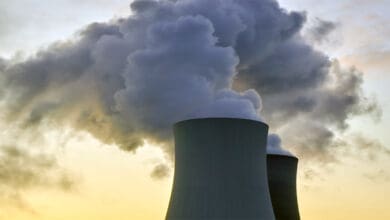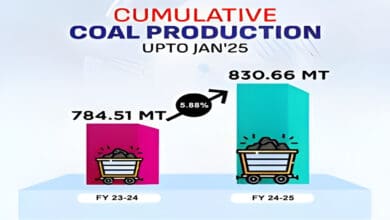Given India’s dependence on coal for 70% of the power sector’s need, the 50% non-fossil fuel sourcing by 2030 itself will be quite challenging and coal will continue to feed the growing energy need of India for the next five decades, according to industry experts. The comments come a day after Prime Minister Narendra Modi surprised delegates at the COP26 climate summit with a bold pledge to cutting emissions at the world’s third-biggest emitter to net-zero by 2070.
“Coal will continue to feed the growing energy need of India in next five decades and only going to peak in the 2040s- hence we need to continue investment in coal mines and infrastructure going forward, else we will face fuel side challenges like in October,” Debasis Mishra, partner at Deloitte Touche Tohmatsu in India told media agency. As such India’s thermal coal capacities are increasing from the current 210GW to 267 GW projected by CEA by 2030. Also, there will be the retirement of old capacities. Hence in no situation, thermal coal capacities will get stranded because of this COP26 commitment, he added. According to former coal India chairman Partha Sarathi Bhattacharyya, coal will have to stay and initially will have to actually increase in quantity and not in share.
“Share will go down but in terms of quantity and in terms of capacity it will perhaps go up from the current levels,” he explained. Niladri Bhattacharjee, Partner, Metals & Mining, KPMG in India said prima-facie, the 2070 commitment for net-zero seems quite doable. However, the generation that will be responsible for this is not yet born or are very young. “Coal’s demise is not a foregone conclusion, especially in the power sector. What happens to coal will be a function of India’s growth, overall energy demand in India, and price of different forms of energy as we go through the transition,” he said. Imported energy may be the first casualty compared to domestic coal. “However, the fourth commitment related to reducing the energy intensity of the economy so sharply will pose a challenge for steel, aluminum, and cement sectors. Somehow, I feel we need to wait and see how the separate commitments impact each other and whether one can be easier to pull off independent of the other,” he added.
On Monday, Modi raised the 2030 target for renewable energy capacity to 500 GW from 450 GW and pledged to produce half the country’s electricity using renewable energy.
India will also cut carbon-dioxide emissions by 1 billion tonnes from business as usual by the end of the decade. To deliver on the 2070 goal, the country still has to lay out a detailed plan for the 40 years in between.
Modi, in his address at the ongoing COP 26 announced a bold pledge on Monday that India will achieve net-zero carbon emissions by 2070 and asserted that it is the only country that is delivering in “letter and spirit” the commitments on tackling climate change under the ParisAgreement. He also raised the Nationally Determined Contribution (NDC)of achieving 450-gigawatt non-fossil energy capacity to 500 gigawatts, among other commitments including reducing carbon emissions.













